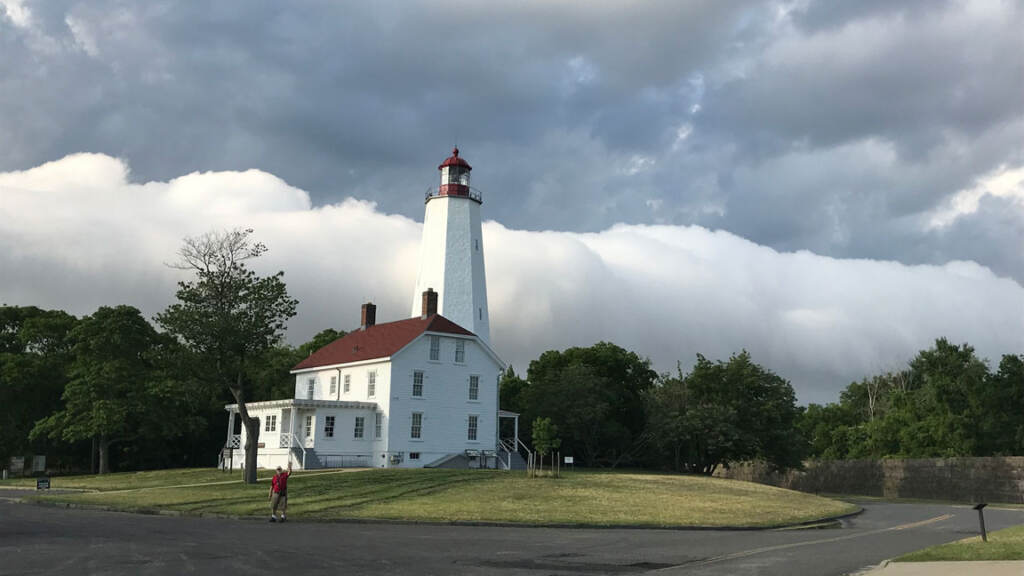|
Hurricane Sandy hits Sandy Hook
Hurricane Sandy provided a bleak glimpse of the extreme end of the climate change spectrum. The superstorm’s high-water mark was around 3.2 feet above any other storm in recorded history at Sandy Hook. Over 70% of the Bayside Holly Forest was inundated. And because a tide gauge located at the park has been delivering data daily since its installation in 1932, the record shows that water levels have risen about 14 inches in that time. That change, the study’s authors point out, translated to Sandy’s surge being a half-foot higher than it would have been if the storm had slammed into New Jersey in 1962.
While this study examines the impacts of sea-level rise on natural landscapes and ecosystems, it isn’t without a warning for the human-built environment.
Many of Sandy Hook’s 9.5 million annual visitors come to see the park’s lighthouse, the oldest surviving lighthouse in the U.S., first lit in 1764. In a stroke of luck, thanks to the natural accumulation of sand on the northwestern lobe of the park, the shoreline in front of the lighthouse has grown substantially. But sea-level rise at the higher end of the scale could erase much of that precious gain.
Any other “cultural resources (at the park) with important infrastructure near the water table (such as basements and utility lines),” the study concluded, “are vulnerable to groundwater inundation with sea level rise.”
New Jersey’s groundwater resources are far more abundant, and in much better shape, than those in the West, of course, but in recent decades water has been drawn from some of the state’s aquifers faster than it can be replenished. Along the coast, in densely populated communities, that can translate into saltwater intruding drinking water.
 A lighthouse in Sandy Hook. (NPS Photo/Jesse Blatter)
Salt in freshwater aquifers A lighthouse in Sandy Hook. (NPS Photo/Jesse Blatter)
Salt in freshwater aquifers
Last year in Cape May, for example, city officials called for an increase in the capacity of a local desalination plant, after finding that saltwater had begun leaching into some area aquifers.
“Saltwater intrusion will be exacerbated by both aquifer overpumping (reducing freshwater pressure from the land side) and sea-level advance (increasing saltwater pressure from the ocean side),” said Reinfelder. “Think of it as two pressure systems against each other, and the saltwater pressure is (going) to win since it is getting stronger while the freshwater pressure is getting weaker.”
The same type of imbalanced pressure dynamic, Reinfelder agreed, could unfold at Sandy Hook National Recreation Area.
“Homes near the shoreline, if they have shallow aquifers, do have the threat of becoming salty especially if they are in a development or if there are many homes pumping water,” New Jersey’s state geologist Jeff Hoffman told NJ Spotlight News last year. “If you have a very shallow well near the coast, and sea level were to rise three feet, that would be additional pressure.”
Putting up barriers and building up shorelines may be effective — at least temporarily — against sea-level rise but fighting the water advancing from below is a whole other challenge.
“There isn’t much we can do, for we have bought into centuries of sea-level rise,” Reinfelder said. “Flooding from below can only be alleviated by a sump pump, which is a losing battle in nature, of course. If sea-level rise is slow enough, natural ecosystems can adapt by migrating — this is our hope.”
|